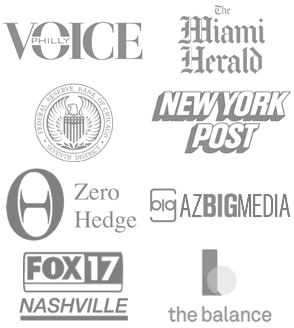When purchasing a home, buyers encounter various expenses beyond the property’s purchase price, collectively known as closing costs. These costs can be substantial, often ranging from 2% to 6% of the loan amount. Given this, many buyers explore options to manage these expenses, including rolling closing costs into their mortgage. We published this article to examine the feasibility, benefits, drawbacks, and considerations of incorporating closing costs into a mortgage, supported by authoritative references.
Understanding Closing Costs and Mortgages
Closing costs encompass fees and expenses required to finalize a real estate transaction. Common components include:
-
Loan Origination Fees: Charges by lenders for processing the loan application.
-
Appraisal Fees: Payment for a professional assessment of the property’s value.
-
Title Insurance: Protection against potential disputes over property ownership.
-
Attorney Fees: Legal services related to the transaction.
-
Prepaid Expenses: Advance payments for property taxes and homeowners insurance.
These costs are typically due at the closing of the transaction, posing a financial challenge for some buyers.
Rolling Closing Costs into the Mortgage
Incorporating closing costs into the mortgage involves adding these expenses to the loan principal, allowing buyers to finance them over the loan’s term. This approach can reduce the immediate cash required at closing. However, it’s essential to understand that not all loan types or lenders permit this practice, and eligibility often depends on specific loan guidelines and property appraisals.
Home Loan Types and Their Guidelines
-
Conventional Loans: Generally, conventional loans do not allow buyers to roll closing costs into the mortgage for a home purchase. However, during a refinance, it’s more common to include closing costs in the new loan amount, provided the loan-to-value (LTV) ratio remains within acceptable limits.
-
FHA Loans: The Federal Housing Administration does not permit rolling closing costs into the loan for home purchases. Borrowers must pay these costs upfront or negotiate a seller concession or lender credit to cover them.
-
VA Loans: The Department of Veterans Affairs allows certain fees, like the VA funding fee, to be included in the loan amount. However, other closing costs typically cannot be rolled into the mortgage. Borrowers can seek seller concessions or lender credits to offset these expenses.
-
USDA Loans: The U.S. Department of Agriculture permits rolling closing costs into the loan only if the property’s appraised value exceeds the purchase price. This allows the excess appraisal amount to cover closing costs.
Benefits of Rolling Closing Costs into the Mortgage
-
Reduced Upfront Costs: Incorporating closing costs into the mortgage decreases the immediate cash needed at closing, making homeownership more accessible, especially for buyers with limited savings.
-
Simplified Transactions: Financing closing costs can streamline the purchasing process by reducing the number of separate payments required at closing.
Drawbacks and Considerations
-
Increased Loan Amount: Adding closing costs to the mortgage increases the loan principal, leading to higher monthly payments and more interest paid over the loan’s life (Rocket Mortgage, 2024).
-
Loan-to-Value (LTV) Ratio Impact: A higher loan amount affects the LTV ratio, which could influence loan approval and terms. Lenders typically prefer an LTV of 80% or lower; exceeding this may result in additional requirements, such as private mortgage insurance.
-
Interest Over Time: Financing closing costs means paying interest on these expenses throughout the loan term, increasing the total cost of the home.
Alternative Strategies
-
Seller Concessions: Buyers can negotiate for the seller to pay a portion of the closing costs. This arrangement must comply with loan program limits and be agreed upon during the negotiation process.
-
Lender Credits: Some lenders offer credits toward closing costs in exchange for a higher interest rate. While this reduces upfront expenses, it results in higher monthly payments over time.
-
No-Closing-Cost Mortgages: Certain loan programs advertise no closing costs, but these often involve higher interest rates or the inclusion of fees in the loan balance. It’s crucial to evaluate the long-term financial impact of such options.
Tax Implications
Some closing costs, such as mortgage interest and certain points, may be tax-deductible in the year they are paid if you itemize deductions (IRS, 2024). However, when these costs are rolled into the mortgage, the deductibility may change. It’s advisable to consult a tax professional to understand the specific implications based on your financial situation.
Rolling closing costs into your mortgage can provide immediate financial relief by reducing upfront expenses. However, it’s essential to weigh the long-term costs, including increased loan amounts and interest payments. Understanding the guidelines of your specific loan type and exploring alternative strategies can help you make an informed decision that aligns with your financial goals.
References
Chase. (2024). Closing Costs: What are They & How Much Will You Pay? Retrieved from https://www.chase.com/personal/mortgage/education/financing-a-home/how-much-are-closing-costs
CSMC Mortgage. (2024). Is it Smart to Roll Closing Costs into Your Loan? Retrieved from https://www.csmcmortgage.com/articles/is-it-smart-to-roll-closing-costs-into-your-loan.php
Internal Revenue Service (IRS). (2024).
